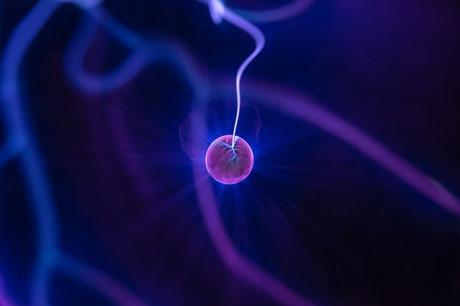
If I was to shrink down “Ant Man style,” so that I was a couple of microns tall … and if I squeezed myself into one of the cells in your body, I would find a busy and complicated chemical factory at work. And in the cell nucleus, I’ll encounter two meters of DNA molecule.
The DNA molecule (deoxyribonucleic acid) is a coiled ladder, two chains of sugar and phosphate running in opposite directions. And on the DNA base pairs, the rungs of this ladder, are segments of biological code…called genes. This code is used in our cells for the production of proteins, the essentials components of life.[1]
Going back to my Ant-Man style exploration of your cell, imagine I peer out of the cell membrane and look out into the rest of your body. Do you know how many cells the average body comprises? Ten trillion. So…that means the average human body contains roughly 12.4 million miles of DNA!
DNA is the most efficient data storage medium on the planet today…far exceeding our traditional memory technologies. One gram of DNA (the weight of a paper clip) has the storage capacity of 4.3 million Blu-Ray discs. It is believed that if we were to encode all the information human beings have ever recorded throughout our history on strands of DNA, it would fit into a container the size and weight of two pickup trucks.[2]
No wonder Bill Gates has said, “DNA is like a computer program but far, far more advanced than any software we’ve ever created.”[3] Atheist biologist Richard Dawkins has also expressed wonder at the capacity and function of the DNA molecule. “Life is just bytes and bytes and bytes of digital information. Genes are pure information – information that can be encoded, recoded and decoded, without any degradation or change in meaning … the fidelity of the copying can be immense … copied with an accuracy that rivals anything modern engineers can do.”[4]
New fields of scientific research, biomimetics and bioinspiration, look to biology to inspire and improve the technology produced by human beings. Using DNA as a data storage medium is only one part of this. But it raises an important question. Why is biology such an incredible source of inspiration for human technology? The same biologists who marvel at DNA in one breath, are also saying it rose accidently as a by product of material processes over long time periods. But this Naturalistic thinking makes biomimetics extremely unexpected. Why would our careful engineering be inspired by random chemical processes?
Biologist Fuz Rana has said, “if biological systems are .. kludged together [by evolution] why would engineers and technologists turn to them for inspiration … [these] should make unreliable muses.”[5] But perhaps something else is going on. Rana continues, “if biological systems are the work of a Creator, then these systems should be so well-designed that they can serve as engineering models … inspire[ing] the development of new technologies.”[6] So Rana is saying that biology isn’t simply LIKE highly engineered artifacts of engineering, they REALLY ARE highly engineered artifacts. That is the reason why biomimetics seeks inspiration from them.
If God created nature, this would explain why we can look to the workings of nature to help us understand how to solve real engineering problems today.
[1] Melissa Cain Travis, Science and the Mind of the Maker, (Eugene: Harvest House Publishers, 2018), kindle edition, loc 1936.
[2] Travis, loc 2141.
[3] Bill Gates, The Road Ahead, (New York: Penguin Books, 1996), 228.
[4] Richard Dawkins, River Out of Eden, (New York: Basic Books, 1995), 18 – 19.
[5] Fazale Rana, “Insect Biology Advancing Technology” in God & the World of Insects, ed. Josh Shoemaker and Gary Braness (Silverton, OR: Lampion Press, 2017).
[6] Rana, “Insect Biology Advancing Technology.”
Photo by Zoltan Tasi on Unsplash
